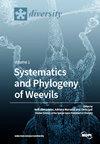栎(Quercus petaea)遗传多样性与结构Liebl。罗马尼亚中部和北部的SRAP标记揭示的种群
IF 2.1
3区 生物学
Q2 BIODIVERSITY CONSERVATION
引用次数: 0
摘要
研究了原生于罗马尼亚特兰西瓦尼亚和马拉穆雷涅地区的5个栎属植物种群的遗传变异性,以了解栎属植物在环境挑战下的适应性、种群动态和保存潜力。为了实现这一点,序列相关扩增多态性(SRAP)标记与一组18引物组合一起使用。分析结果显示,多态性范围为69.78% ~ 85.75%。Shannon’s信息指数(I)在0.2887 ~ 0.3955之间,Nei’s基因多样性指数(He)在0.1833 ~ 0.2582之间。通过分子变异(AMOVA)进行的遗传变异分析表明,9%的遗传变异可归因于种群间的差异,而91%的遗传变异存在于种群内。对种群结构的进一步研究表明,基于Nei遗传距离构建的UPGMA树形图阐明了两个主要遗传簇的存在,这一发现通过主坐标分析(PCoA)得到了加强。利用SRAP分子标记揭示的栎树遗传多样性为未来的育种计划提供了良好的潜力,以确定最佳的遗传,促进特兰西瓦尼亚和马拉穆雷涅地区适应性良好的栎树种群的发展。本文章由计算机程序翻译,如有差异,请以英文原文为准。
Genetic Diversity and Structure of Quercus petraea (Matt.) Liebl. Populations in Central and Northern Romania Revealed by SRAP Markers
The genetic variability of five populations of Quercus petraea originating from the Transylvania and Maramureș regions of Romania was investigated in this study to provide insights into the species’ adaptability, population dynamics, and potential for preservation in the face of environmental challenges. To achieve this, sequence-related amplified polymorphism (SRAP) markers, in conjunction with a set of 18 primer combinations, were employed. The outcomes of the analysis revealed a range of polymorphisms spanning from 69.78% to 85.75%. Additionally, the assessment of genetic diversity using Shannon’s information index (I) yielded values ranging between 0.2887 and 0.3955, while Nei’s gene diversity (He) exhibited a spectrum from 0.1833 to 0.2582. The analysis of genetic variability, conducted via molecular variance (AMOVA), unveiled that 9% of the genetic variation was attributable to differences among the populations, while a substantial 91% resided within the populations. A further investigation of the population structure revealed that the construction of a UPGMA dendrogram based on Nei’s genetic distances elucidated the presence of two principal genetic clusters, a finding that was reinforced by a Principal Coordinate Analysis (PCoA). The genetic diversity revealed by Quercus petraea using SRAP molecular markers offers promising potential for upcoming breeding programs to identify optimal genitors, facilitating the development of well-adapted oak populations in the Transylvania and Maramureș regions.
求助全文
通过发布文献求助,成功后即可免费获取论文全文。
去求助
来源期刊

Diversity-Basel
Environmental Science-Ecological Modeling
CiteScore
3.40
自引率
12.50%
发文量
925
审稿时长
11 weeks
期刊介绍:
Diversity (ISSN 1424-2818) is an international and interdisciplinary journal of science concerning diversity concept and application, diversity assessment and diversity preservation. It is focused on organismic and molecular diversity. It publishes reviews, regular research papers and short notes in the regular issues. Related news and announcements are also published. Our aim is to encourage scientists to publish their experimental and theoretical results in as much detail as possible. Therefore, there is no restriction on the length of the papers. Full experimental details must be provided so that the results can be reproduced.
 求助内容:
求助内容: 应助结果提醒方式:
应助结果提醒方式:


